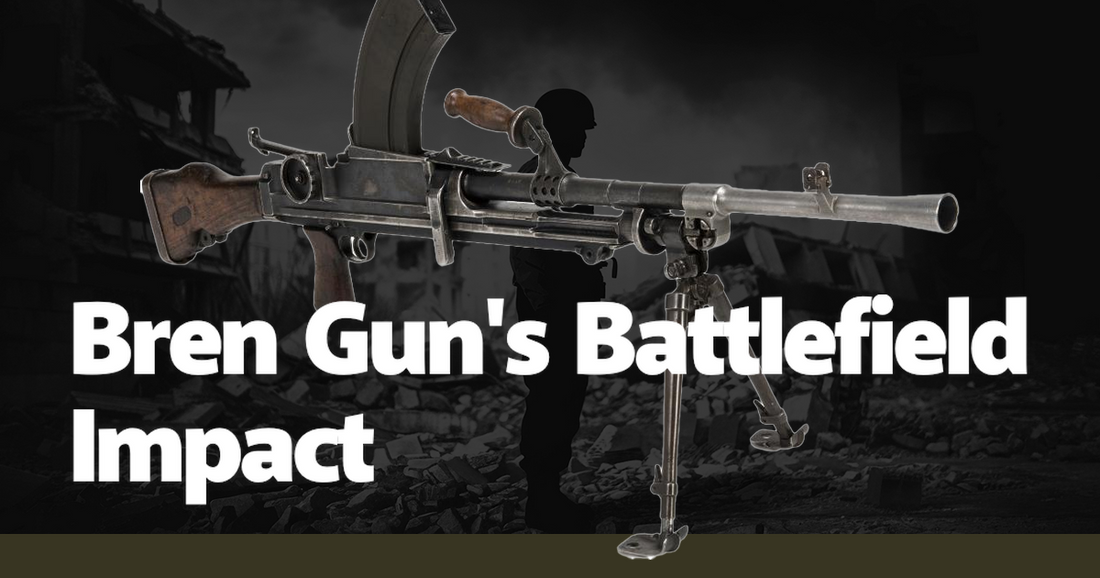The Bren Gun, officially known as the Bren light machine gun, emerged as one of the most iconic and reliable firearms of the 20th century. Its impact on the battlefield, particularly during World War II, is a testament to its design and versatility. Developed by the British from the Czech ZB vz. 26, the Bren Gun was a crucial element in the British and Commonwealth forces’ arsenal. Its introduction in 1938 marked a significant shift in infantry tactics, providing a blend of mobility and firepower that was previously unattainable. The Bren Gun's adoption allowed for more flexible and dynamic combat strategies, fundamentally altering the landscape of infantry engagements.
One of the most notable features of the Bren Gun was its exceptional reliability under adverse conditions. Soldiers in various theaters of war, from the scorching deserts of North Africa to the dense jungles of Southeast Asia, lauded the weapon for its consistent performance. Anecdotes from veterans often highlight the Bren Gun's ability to function smoothly despite being subjected to sand, mud, and extreme weather. This reliability was not just a matter of convenience; it was a critical factor in the heat of battle, where a malfunctioning weapon could mean the difference between life and death. The Bren Gun's robust construction and ease of maintenance made it a favorite among troops who needed a dependable weapon they could trust in any situation.
The Bren Gun's design also contributed to its battlefield effectiveness. With a top-mounted, curved magazine and a distinctive flash hider, the Bren was easy to recognize. Its bipod and shoulder strap allowed for both prone and shoulder-firing positions, making it versatile in various combat scenarios. The weapon's rate of fire, approximately 500 rounds per minute, provided a balance between suppressive fire and ammunition conservation. This rate of fire, combined with the weapon's accuracy, made the Bren Gun an ideal tool for both offensive and defensive operations. During the Normandy landings, for example, Bren Gunners played a pivotal role in suppressing German defenses, allowing infantry units to advance with reduced risk of counterattack.
The psychological impact of the Bren Gun on both its users and its adversaries cannot be understated. For British and Commonwealth soldiers, the Bren Gun was a source of confidence and morale. Its distinctive sound and reliable performance contributed to a sense of superiority over enemy forces. Conversely, for Axis troops, the sound of a Bren Gun often signaled an impending and formidable assault. There are numerous accounts of German soldiers expressing their respect and apprehension towards the Bren Gun's capabilities. This psychological edge was an invaluable asset in the chaos of combat, where mental resilience could be as crucial as physical endurance.
In terms of tactical deployment, the Bren Gun was often used in a fire-and-maneuver strategy. This involved Bren Gun teams laying down suppressive fire while riflemen advanced on enemy positions. This tactic was particularly effective in breaking through fortified defenses and in urban warfare, where quick, coordinated movements were essential. The Bren Gun's portability allowed it to be rapidly repositioned, providing continuous support and maintaining pressure on the enemy. During the Battle of El Alamein, Bren Gun teams were instrumental in the Allied forces' ability to outflank and overwhelm Axis positions, demonstrating the weapon's strategic value.
The Bren Gun's adaptability extended beyond its primary role as a light machine gun. It was mounted on vehicles, used in anti-aircraft roles, and even adapted for use in the jungles of Burma, where its reliability and firepower were crucial in the fight against Japanese forces. The versatility of the Bren Gun meant that it could be employed in a variety of roles, from providing covering fire for advancing troops to defending strategic positions against enemy attacks. This adaptability made the Bren Gun an indispensable tool in the diverse and challenging environments of World War II.
Post-World War II, the Bren Gun continued to see service in various conflicts, including the Korean War and the Malayan Emergency. Its enduring presence on the battlefield attests to its effectiveness and the high regard in which it was held by military forces. Even as newer weapons were developed, the Bren Gun remained a reliable and respected choice for many armies. The legacy of the Bren Gun is evident in the continued use of its design principles in modern firearms, underscoring its lasting impact on military technology and tactics.
In conclusion, the Bren Gun's battlefield impact is a story of innovation, reliability, and tactical versatility. Its introduction revolutionized infantry combat, providing a blend of firepower and mobility that was crucial in numerous engagements. The weapon's design, reliability, and psychological impact made it a formidable tool in the hands of British and Commonwealth forces. From the deserts of North Africa to the jungles of Southeast Asia, the Bren Gun proved its worth time and again. Its legacy continues to influence modern military strategies and weapon designs, ensuring that the Bren Gun's impact on the battlefield will be remembered for generations to come.

